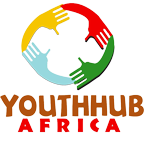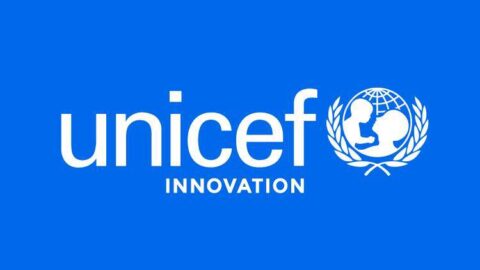Some time ago, while researching on a particular country (name withheld), I consulted a development index (name withheld also). I was surprised to see that the glowing figures attributed to this country for that year in the index flew flat in the face of everything else I had found out from other sources (including other indexes). That was how my love affair with development indexes began; it was a search for complementarity or divergence in index data. Since then, I have spent a lot of time comparing and contrasting between countries, across indexes, across other sources and also across time. Perhaps I would soon edit my resume to include “reading development indexes” as a hobby.
After spending some time studying development indexes, I come to the conclusion that something is missing. I described my ideas to my friend and fellow blogger on Youth Hub Africa, Sola Fagorusi, and he indicated that what I am looking for is a “Meta Index”. The gap I am looking at is described by this scenario: what should be my conclusion if a country, say North Korea is recorded as the 10th (out of 200) on development index A but placed 150th (out of 152) on development index B? Additionally, what does it imply that index A is published in June while index B is published in December of a given year? Still, sometimes the variables (education, mortality, (un)employment, etc) measured in each index differ so widely that comparisons are just not feasible. There is also the problem whether indexes presents trends from a single previous year only or if a cumulative value of a number of previous years is used – in fact there are also forward looking indexes usually published at the beginning of the year. These were some of the problems I tossed around and subsequently I wrote an article published in the West Africa Insight which contrasted the performance of West Africa in 2012 from the Ibrahim Index of African Governance (IIAG) against the Failed States Index (FSI) and the UNDP’s Human Development Index (HDI).
How many indexes exist in the world today? Sorry, I have no idea. But I think that there is room perhaps for more indexes but also for improvements in the parameters used by current indexes. I don’t mean that the indexes should align and harmonise their variables and methodology; but I am thinking that there is something that can be done to allow readers to come to an up-to-date picture of a particular country or group of countries on a daily basis if possible. Here is what I propose.
Supposing I have the computing skills, I would build a computer program (or an ‘app’) into which I could feed in all development indexes I can find, including, say the AfriMAP, Afrobarometer, the Bertelsmann Stiftung’s Transformation Index (BTI); the Corruption Perceptions Index (CPI); the Doing Business Rankings; the Failed States Index (FSI); the Freedom in the World; the Human Development Report (HDR); the Ibrahim Index of African Governance (IIAG); and the Legatum Prosperity Index among many others. It is crucial that this program be open-ended to allow new indexes to be added. This sort of aggregate is what my friend calls a Meta Index.
But it is not enough to aggregate data across different indexes into a Meta Index; it is also crucial that the indexes also speak to each other. That is to say, findings on each country on the indexes within the same time period are contrasted and an average is calculated. Additionally, controls would be needed to subtract or add values to compensate for time difference between indexes. When this is done, a weighted mean score for each country is presented as an aggregate of the different scores and indices covered in individual indexes. This program would then produce what I call ‘The Good Country Index’ (patent pending, by the way).
But why is a Meta or Good Country Index really needed? I give you one example with Mali. 2012 IIAG ranked Mali 20th best placed in Africa and 14th (just ahead of Malawi) on Safety and Rule of Law. On the Legatum Prosperity Index, Mali was ranked 104th out of 142; but it was the 51st best placed in Safety and Security. This was perhaps a fairly accurate depiction of Mali during 2012; but if you followed the news, you may know that Mali has since changed from being a stable country that it was into a theatre of “chaos”. If we know that Mali has moved on from what it was when the index was compiled how do we know if other countries are still where the index said they were? In other words, for how long should we consider information in a development index as valid?
I should clarify that I am not looking for a daily index. The value of data on countries over a period of time – say one year, is simply irreplaceable. But there is need for daily updates as well on countries. The current approach to research on countries is as follows: first locate the development index(es) which cover the desired indices and timeframe under review; study the ranking of the subject country or countries and then go on to the news and other sources to see if anything has changed between the index and available reports. This is good, but it is slow and error prone process. There is need to combine the indexes and the news in a single program thereby making an unbroken timeline through time that could connect one annual ranking to another in a given index but also one index to another.
In case you have not noticed, development indexes could, and have been used for deception. Politicians and other commentators are quick to cite “reports” that support the conclusions that they have already made. Come to a conclusion and then find (or create) the evidence that supports it – that is the logic in these circles. The trick is to find the index that affirms what one wishes to say without consideration that a lot might have changed between the publication of such index and the current debate. Of course it is obvious that any index that publishes the data that is not desired will be ignored or condemned. Supporting a political conclusion with a reputable development index could swing a lot of votes or favours from one end of the political spectrum to the other. But in extreme cases of ‘misquoting’, the development index could publicly disown the analysis, yet if we are less vigilant, they could easily escape our notice.
Until the proposed aggregated and updated index which I call the Good Country Index is built; researchers and citizens must keep an eye out on the data we are fed. Cross check every allusion to rankings and indexes and do your comparison over time, across countries, across indexes and across news headlines. If your findings do not agree with what you are told, please ask WHY. But very importantly, do you think you have ideas on building the Good Country Index? Then by all means we should talk about it!
______________
Nengak Daniel Gondyi is presently a post-graduate student in International Migration and Ethnic Relations at Malmö Högskola in Sweden. He is also a Senior Programme Officer of the Abuja based Centre for Democracy and Development, CDD. He holds a Bachelors’ in International Studies from the Ahmadu Bello University. Read his full profile here.







